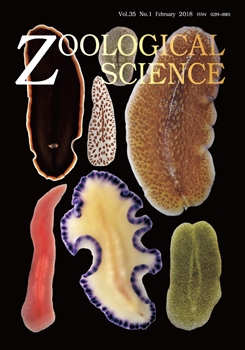I analyzed the association between the reflectance spectra and melanin rod arrangement in barbules of the eyespot of peacock feathers. The reflectance spectra from the yellow-green feather of the eyespot indicated double peaks of 430 and 540 nm. The maximum reflectance spectrum of the blue feather was 480 nm, and that of the dark blue feather was 420 nm. The reflectance spectra from brown feathers indicated double peaks of 490 and 610 nm. Transmission electron microscopic analysis confirmed that melanin rods were arranged fanwise in the outer layer toward the barbule tips. In addition, using polarized light microscope, I attempted to determine whether the turning angles of melanin rods in the barbules reflected different colors. The turning angle of the polarizing axis of the barbules was supported by that of the melanin rods, observed using transmission electron microscopic images. To compare the turning angle of melanin rods in the respective barbules, I calculated the opening width of the fanwise melanin rods by dividing the width of the barbules by the turning angle of the polarizing axis of barbules and obtained a positive correlation between the reflectance spectra and opening width of the fanwise melanin rods. Moreover, the widely spreading reflection from the barbules may occur because of the fanwise melanin rod arrangement.
How to translate text using browser tools
1 January 2018
Reflectance Spectra of Peacock Feathers and the Turning Angles of Melanin Rods in Barbules
Toshio Okazaki
ACCESS THE FULL ARTICLE
<
Previous Article
|

Zoological Science
Vol. 35 • No. 1
February 2018
Vol. 35 • No. 1
February 2018
feather
melanin
peacock
polarization
reflectance spectrum




